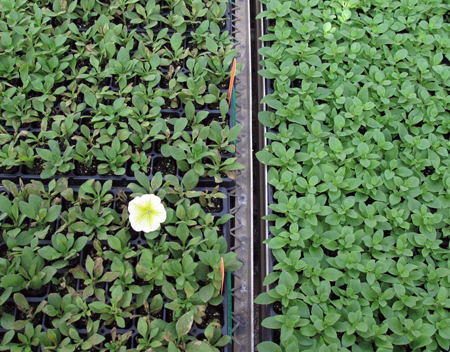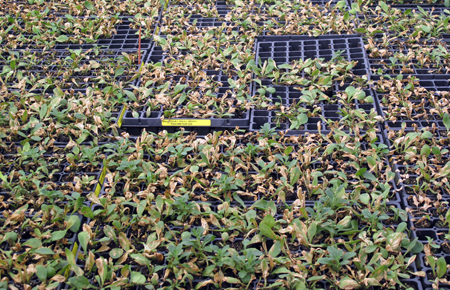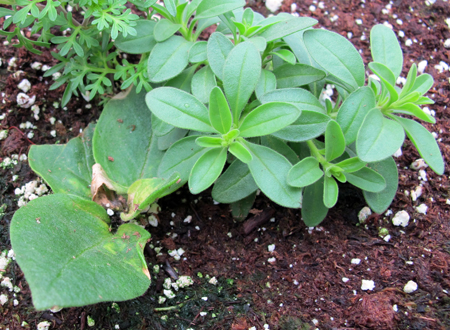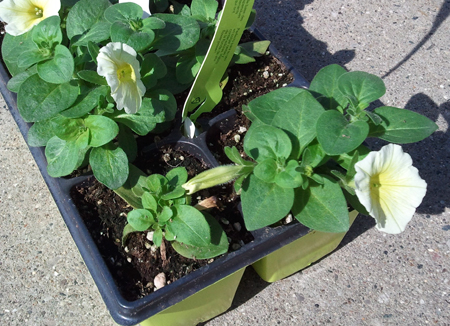Vegetative Petunia Propagation and Production Challenges
Several vegetative petunia varieties are proving difficult to grow this year – learn why.
In the past month, we have visited several greenhouse growers across the Midwest and Northeast who have had challenges this year producing some vegetative petunia varieties from different breeding companies. The problem seems to affect yellow cultivars more severely than others. We have observed two problems:
1. Cuttings root well, but toward the end of the liner stage, they lose vigor, turn yellow or develop necrotic spots, and/or die (Photo 1).
2. A small percentage (5 to 10%, sometimes more) of finished plants are stunted and have low vigor (Photo 2).

Photo 1. Cuttings begin to turn yellow, develop necrotic (brown)
spots and/or shoot tips abort during week 3 of propagation
(left). An unaffected cultivar propagated at the same time as
the affected cultivar (right). Photo credit: Roberto Lopez

Photo 2. Symptoms become more severe during the toning phase
of propagation. Photo credit: Roberto Lopez
Some samples have been submitted to MSU’s Diagnostic Services and the Purdue Plant and Pest Diagnostic lab, and no pathogens have been found, but the media fertility levels were often low and the pH sometimes high (above 6.0). We consulted with Dr. Allen Hammer of Dummen, who has spent more time determining the likely causes to these issues. It seems pretty clear that these problems involve the nutritional status of the cutting, fertilizer provided during propagation, as well as plant genetics. The problem likely occurs early during propagation but shows up later once the liners are actively growing. The cutting meristems abort, which could be from a calcium and/or boron deficiency. The cuttings root normally, but are unable to grow because of the aborted meristems.
Some of the liners with the aborted meristems may grow from an axillary bud, or perhaps an adventitious bud, if high fertility is provided (300 ppm nitrogen) (Photo 3). The cuttings that do grow from these axillary buds are slower to develop, thus creating the appearance of reduced vigor when mixed with normal liners. When finish plants from unaffected liners are ready for shipping, those from affected cuttings are not (Photo 4).
The following factors can make this problem worse:
- Excessive misting during propagation
- Propagation root medium pH above 5.5
- Little or no fertilizer applied during liner production

Photo 3. The shoot-tip meristem of petunia aborted during
propagation. If fertility levels are sufficient, the axillary buds
develop flowering of those shoots is delayed.
Photo credit: Allen Hammer, Dummen

Photo 4. The variability in rooted liners of petunia created a
nonuniform finish crop. Photo credit: Erik Runkle
Growers are encouraged to use a fertilizer that contains micronutrients at a relatively high rate (e.g., 250 ppm nitrogen) once roots form. In addition, lower the humidity once cuttings become established to promote uptake of calcium and boron, and increase air flow. Avoid low light and cold growing conditions, since plants use less water in those conditions. For more information on how to manage the environment during cutting propagation, visit: https://sharepoint.agriculture.purdue.edu/agriculture/flowers/extension.aspx



 Print
Print Email
Email



